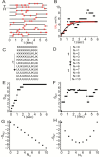This is a preprint.
Scaling in Biological Systems: A Molecular-Ensemble Duality
- PMID: 39974975
- PMCID: PMC11838518
- DOI: 10.1101/2025.01.31.635926
Scaling in Biological Systems: A Molecular-Ensemble Duality
Abstract
We have observed in muscle the statistical mechanics of irreversible chemical thermodynamics, revealing the solution to multiple seemingly unrelated paradoxes in science. Analogous to Boltzmann's H theorem, we observe that chemical reaction energy landscapes (ensemble entropic wells) irreversibly evolve over time, pulling reversible chemical reactions forward in time. Loschmidt's paradox assumes that reversible molecular reactions scale up to irreversible changes in an ensemble, and many mathematical constructs have been created to satisfy this assumption (Boltzmann's H-function, chemical activities, the kinetics theory of gases, molecular mechanisms of biological function, etc.). However, using a simple statistical argument, here we show that the irreversible time evolutions of molecular and ensemble states are described by two different non-scalable entropies, creating a molecular-ensemble duality in any system on any scale. This inverts common understandings of mechanistic agency and the arrow of time and disproves all molecular mechanisms of irreversible ensemble processes.
Figures


References
-
- Kammerer C. F., Lasser C., Single Switch Surface Hopping for Molecular Dynamics With Transitions. J Chem Phys 128 (2008). - PubMed
-
- Bai S., Xie W., Shi Q., A New Trajectory Branching Approximation to Propagate the Mixed Quantum-Classical Liouville Equation. J Phys Chem A 118, 9262–9271 (2014). - PubMed
-
- Semenov S. N., Schimpf M. E., Internal Degrees of Freedom, Molecular Symmetry and Thermodiffusion. Comptes Rendus Mécanique 339, 335–341 (2011).
-
- Kostić M., The Elusive Nature of Entropy and Its Physical Meaning. Entropy 16, 953–967 (2014).
-
- Shannon C. E., A mathematical theory of communication. The Bell System Technical Journal 27, 379–423 (1948).
Publication types
Grants and funding
LinkOut - more resources
Full Text Sources
